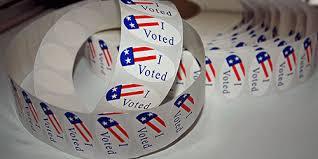Student Voting at Sonoma State Up in 2018
College-student voting doubled nationwide, according to a national study
SSU student voting was up in last year’s election, increasing to 39.2% in 2018 from a rate of 16.9% in 2014.
SSU faculty’s action to hand out postage stamps in the weeks prior to the election may have led to this unprecedented expression of civil opinion. Implementing such action resulted in the voices of our students being heard across the nation.
The report is part of the National Study of Learning, Voting, and Engagement, or NSLVE, conducted by the Institute for Democracy & Higher Education (IDHE) at Tufts University’s Tisch College of Civic Life. The study shows that nationwide, the voting rates at participating college campuses doubled on average compared to the previous 2014 midterm. In 2018, the Average Institutional Voting Rate (AIVR) among campuses in the study was 39.1%, nearly 20 percentage points higher than 2014’s average turnout rate of 19.7%. Turnout increases were widespread, with virtually all campuses seeing an increase over 2014. The full SSU campus report can be viewed here [https://idhe.tufts.edu/sites/default/files/DemocracyCounts2018.pdf].
“I am so proud of our students for getting out there and making their voices heard. Voting is an important indicator of civic responsibility. Let’s set an ambitious goal and increase our numbers in the next election.” says Merith Weisman, Director of the Center for Community Engagement.
This report is based on the National Study of Learning, Voting, and Engagement (NSLVE), conducted by IDHE, which is the only national study of college-student voting. It is based on the voting records of more than 10 million students at more than 1,000 colleges and universities in all 50 states and the District of Columbia; IDHE does not receive any information that could individually identify students or how they voted. The study provides reports to participating colleges and universities, like Sonoma State University, which use them to support political learning and civic engagement, as well as to identify and address gaps in political and civic participation.

Author: Damien Wilson



